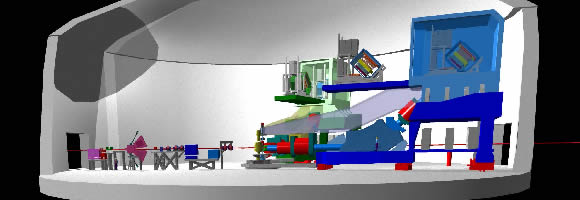 PVDIS : Momentum Spectrometer
PVDIS : Momentum Spectrometer
 PVDIS : Momentum Spectrometer
PVDIS : Momentum Spectrometer
Symmetry permeates nature and is fundamental to all laws of physics. One example is parity (mirror) symmetry, which implies that flipping left and right does not change the laws of physics. Laws for electromagnetism, gravity and the subatomic strong force respect parity symmetry, but the subatomic weak force does not1, 2. Historically, parity violation in electron scattering has been important in establishing (and now testing) the standard model of particle physics. One particular set of quantities accessible through measurements of parity-violating electron scattering are the effective weak couplings C2q, sensitive to the quarks’ chirality preference when participating in the weak force, which have been measured directly3, 4 only once in the past 40 years. Here we report a measurement of the parity-violating asymmetry in electron–quark scattering, which yields a determination of 2C2u − C2d (where u and d denote up and down quarks, respectively) with a precision increased by a factor of five relative to the earlier result. These results provide evidence with greater than 95 per cent confidence that the C2q couplings are non-zero, as predicted by the electroweak theory. They lead to constraints on new parity-violating interactions beyond the standard model, particularly those due to quark chirality. Whereas contemporary particle physics research is focused on high-energy colliders such as the Large Hadron Collider, our results provide specific chirality information on electroweak theory that is difficult to obtain at high energies. Our measurement is relatively free of ambiguity in its interpretation, and opens the door to even more precise measurements in the future.